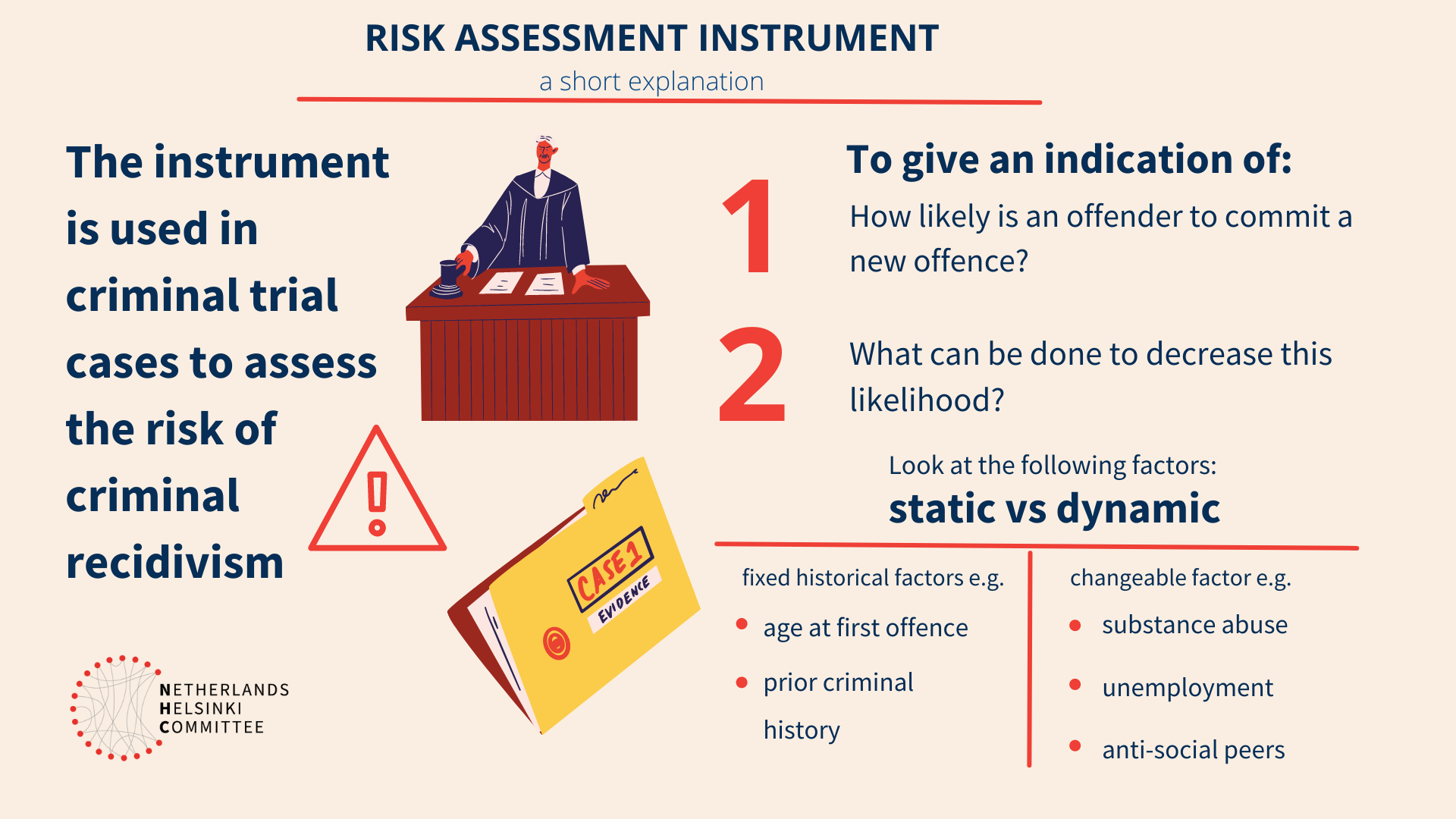NHC’s hand in the development of the Serbian Probation Service
Interview with Probation expert Frans Clobus on the development of a new risk assessment instrument
In March, Jelena Srnić Nerac, the new Head of Probation in Serbia asked the NHC – as part of our collaborative probation project in Serbia to create a new risk assessment instrument. Specifically one “that would be usable” as the old instrument consisted of 60 pages and was affectionately referred to as “the monster.”
To discuss the significance of the tool, past versions used in Serbia and its significance in relation to the project, we met with Frans Clobus, Dutch expert in probation development and alternative sanctions. Clobus has a long history of working in Serbia and has experienced many of the definitive changes in the countries probation system first hand.
What is a risk assessment instrument?
A risk assessment instrument is defined as a scientifically substantiated questionnaire that can be used to identify the probability or likelihood of future criminal recidivism and assign an appropriate level of supervision.

The essentiality of using a risk assessment instrument in probation work was heavily emphasised by Clobus. It should be the basis for all activities, “every sanction you undertake… if it is house arrest, behavioural training, if it is community service, whatever you do you base your decisions and reaction on the risk assessment.”
“The risk assessment instrument provides you with a vision, an assessment of the person of his criminal behaviour and with this inside you can act.”
The Introduction of Pre-trial Advice in Serbia
Clobus explained that internationally the risk assessment instrument is heavily relied upon, however, in the case of Serbia at the inception of the project the instrument was incredibly outdated and was often left sitting unused in the corner collecting dust. This was primarily due to its size, the 60 page long “monster,” did not scream user friendly.
For redesigning the instrument that was introduced in Serbia, Clobus used the latest version of the Dutch risk assessment instrument as a basis. An update which was adapted “following the latest insight in human behaviour, criminal behaviour, evidence based.” Clobus shared that the “Serbian judges were very open to this new approach” and “although the law does not provide it, it does not forbid it, and they, the judges, were willing to step out of the box and said okay let us do this and it was, I think, a big success.”

Take aways?
The last training that Clobus conducted as expert for the NHC in Serbia was also one of the first in person trainings after the start of COVID-19. When reflecting upon the training Clobus highlighted the fact that:
“It is hard for the commissioners to step out of the box and to approach prisoners and criminals in a totally different way. During the latest sessions I realised and I also said we are not introducing a risk assessment instrument again, but we also using a new way at looking at crime, at criminal behaviour on a totally different angle.”
One of these new methods was including the financial situation to assess the risk of recidivism of the suspect. Criminal behaviour can arise when the basic needs cannot be met due to a lack of income. Questions assessing the financial situation of a suspect are therefore particularly important.
Clobus explained however, that in Serbia they found it very hard to ask these questions, “how much rent do you pay, how high is your energy bill, how much you pay for this and that is private.” The nature of these questions, as well as emotional questions regarding mental health and familial relations was unknown territory. “This is a new area for them to explore and get used to it.”
Clobus also highlighted that “it is also very important that a working alliance is established, mutual trust by the client and by the probation officer. In Montenegro they are able to do so, I have seen excellent examples of that, but for Serbians its quite difficult.” The different strengths and weaknesses of both states in successfully implementing a probation service further highlight the need for strong regional cooperation.
Words of advice?
With regard to fully implementing the risk assessment instrument in Serbia, “the basis is there, things are moving, and an increasing number of judges understand the benefit of using alternative sanctions for their work. In Serbia and Montenegro things are moving in a different way if we could continue helping them because we’re almost there. We have been working from 2008 until today and now is the moment to continue. It would be a shame if the request for extension of the project is rejected, because then the project has to stop at the end of this year.” So the advice would be to simply just keep doing it, “keep doing it because if you do not use it, you lose it.”
About the Criminal Justice Reform Programme
We believe a criminal justice system focused on rehabilitation rather than punishment is better at contributing to safer societies. The Criminal Justice Programme promotes and supports criminal justice reform that works to ensure offenders are able to successfully re-enter society and do not re- offend. By providing tools and trainings to prison staff or probation officers, we help improve the implementation of justice. By bringing together high-level officials, policy experts, and seasoned practitioners from different countries, we contribute to the development of the most effective policies and practices. We also promote collaboration between different actors in the justice system, such as judges, prosecutors, probation, prison, and civil society organisations to ensure reforms pursued are effectively implemented throughout the entire system.


